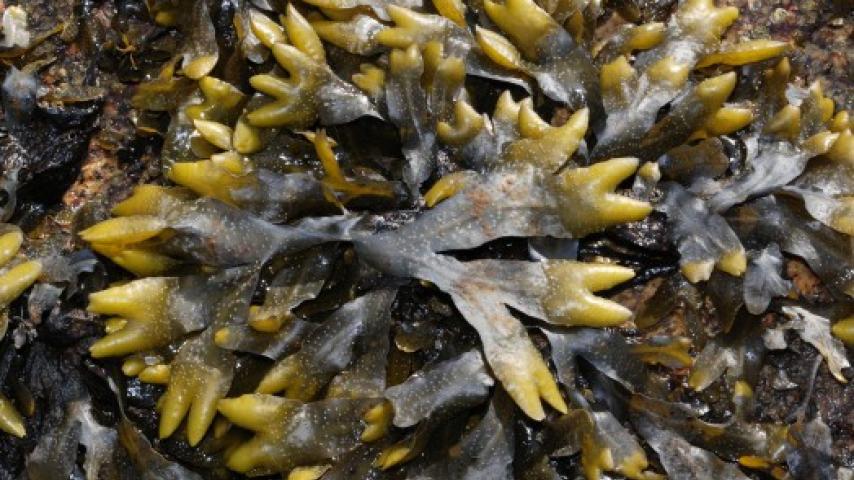Rockweed (Fucus distichus)
“Seaweeds” include three different major phyla of algae: red, green, and brown. Rockweed is a brown alga, as its color indicates.

KINGDOM Chromalveolata - PHYLUM Heterokontophyta - CLASS Phaeophyceae - ORDER Fucales - FAMILY Fucaceae
The characteristic dichotomous branching pattern identifies it, as does its profuse growth in the upper and middle intertidal zones. Distichus refers to the opposite rows of leaflike structures on either side of each branch. A prominent midrib runs down each branch of the thallus, The holdfast is small, the stipe (“stem”) short.
The plants grow to about 30 cm long; they grow and grow during the summer, filling the intertidal with mats of rockweed. Waves break them loose, and many plants are seen in the masses of floating detritus in "tide lines" caused by converging currents.
One reason rockweed is so abundant is that it is chemically protected from many predators. It produces chemicals called phenols that make it indigestible because the phenols bind to and inactivate the digestive enzymes of grazing animals. Nevertheless, it does have predators, including periwinkles, limpets, and isopods. People who relish seaweeds may eat it as well, and in some areas it is harvested as a delicacy when herring attach their eggs to it.
Sexual reproduction occurs during the summer, when many of the branches are tipped by swollen bladders called receptacles that contain gametes in separate male and female plants. These bladders are what make rockweed instantly recognizable. The male gametes are called antherozoids, and they are attracted by a substance released by the eggs. The zygote settles out and produces a new plant. These are sporophytes, and what could be called the gametophyte generation occurs only immediately during meiosis just before the gametes are formed.
In one study, it was found that sperm and eggs were most often released during daytime low-tide events. It was concluded that being isolated in tide pools was conducive to fertilization, while currents that swept past at high tide would carry away the gametes and perhaps not allow them to meet.